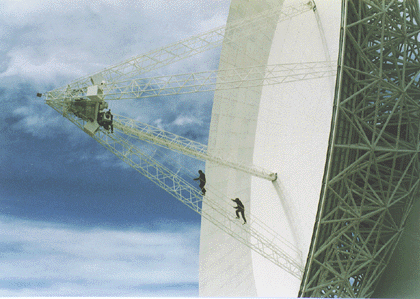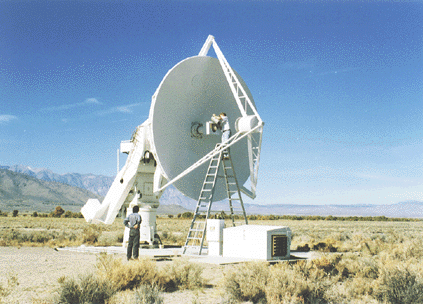



See my CBI Page for CBI-related CMB references and information!
The study of anisotropy in the microwave background radiation has come into its own as a leading field in observational cosmology, due to the successes of a number of recent experiments. The fluctuations in the background intensity are expected to be at the level of about 10 parts in a million, so the utmost in precision and sensitivity is required of these observations. The COBE satellite has provided us a clear measurement of the cosmic background fluctuations on the largest angular scales, and a recently approved MIDEX mission scheduled for launch just after the turn of the century will map the sky down to scales of one-half degree or so. Even in this age of rockets, balloons, and satellites, there is much that can be done efficiently from the ground, where the ease of logistics, accessibility, repeatability, and unlimited operating durations can make up for the hardships introduced by the Earth's atmosphere. This is particularly true on angular scales below a degree.

Much of the interesting cosmological information is contained in the anisotropies on scales from a few arcminutes to a half degree. Over the past decade, I have been involved in conducting some of the pioneering microwave background observations on angular scales from 2' to 7' using the 40-meter radio telescope at the Owens Valley Radio Observatory (Readhead et al. 1989; Myers, Readhead & Lawrence 1993). We are now finishing work on a series of observations measuring cosmic background fluctuations on scales from 7' to 22' using the observatory's 5-meter radio telescope (Leitch et al. 1998, in preparation). One of the surprising results of this program is the discovery of a previously unknown foreground free-free emission associated with IRAS 100µm dust emission ( Leitch et al. 1997).
The goal of this work is to not only measure the level of anisotropies at these angular scales, but to measure the shape of the fluctuation power-spectrum as a function of angular scale. This statistical function contains the cosmological information we seek - the fossil record of the early universe. On the angular scales from 5' to 30', the signature of the seeds of structures that will grow into the networks of galaxies, filaments, clusters, and superclusters observed today are impressed upon the cosmic background (e.g. White, Scott & Silk 1994; Steinhardt 1995). By measuring the location and amplitude of ``peaks'' and ``valleys'' in the terrain of the power spectrum, we can begin to disentangle the role that the various components of the energy density of the Universe make: the baryonic matter, the dark matter, vacuum fluctuations, and the energy in spatial curvature.

Steven T. Myers